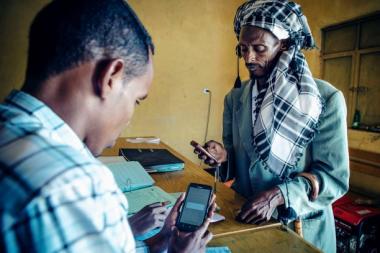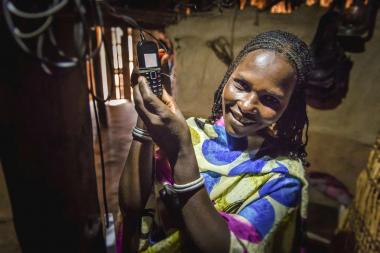Juxtaposition of women’s economic empowerment and innovation: is one a pathway to the other?
This report explores ways in which economically empowered pastoralist women initiate and or adopt innovations at a personal and communal level.
In Somaliland, women’s work, often invisible, anchors herd management, processing, and local trade, yet is constrained by limited assets, restrictive social norms, and traditional household responsibilities such as caring for children, collecting water, cleaning, and preparing family meals.
Our objective was to explore the relationship between women’s empowerment and innovation. Specifically, we aimed to understand local definitions of women’s economic empowerment and innovation; to identify formal and informal innovations created or adopted by pastoralist women, especially during crises; to explore drivers of innovation and the strategies women use to advance economically; and to examine links between women-led innovation and empowerment at practical, institutional, and normative levels.
Across villages in Hargeisa and Wajaale town, Somaliland, SPARC researchers conducted six focus group discussions (FGDs) with pastoralist and agro-pastoralist households.
Key Informant Interviews (KII) were held with 11 men and women from the communities and towns relevant to the FGD sites. Interviewees represented milk traders, fattening farm owners, meat traders, brokers, formal and traditional animal health workers, community leaders, and government officials (Chamber of Commerce; Ministry of Livestock).
Findings:
When women pursue empowerment, they innovate around the obstacles that they face including societal and cultural barriers.
Innovations, such as locally formulated animal feed rations and local adaptations to accessing formal finance, within Somaliland's livestock raising and meat trading are shaped not only by technical or financial considerations but also by deeply-rooted cultural practices and policy environments.
Women in Somaliland’s livestock economy are already innovating and adapting quietly, persistently, and effectively. They face, however, competing priorities as they advance.
The community strongly values individuals, especially women, who contribute to the welfare of others. This emphasis on collective progress and support is rooted in culture: empowerment is often viewed as an added responsibility rather than a departure from tradition. Even empowered women rarely abandon their cultural or religious values: economic advancement is compatible with longstanding social norms.
Policy implications:
Sustainable change requires integrating new practices within local values, ensuring that empowerment efforts enhance rather than disrupt the fabric of community life. Success hinges on a delicate balance of community acceptance, external support, and continued investment in education and infrastructure, specifically digital communication networks, roads, and water systems.
To push out the frontiers of productivity and women’s empowerment, policy and public investments must match practice: finance that fits the needs of women’s enterprises; digital communication as well as meat/milk infrastructure that raises quality and reduces waste; and integration of gender transformative approaches into development programmes to support redistribution of household workloads and shift norms that limit women’s agency and contribution.



